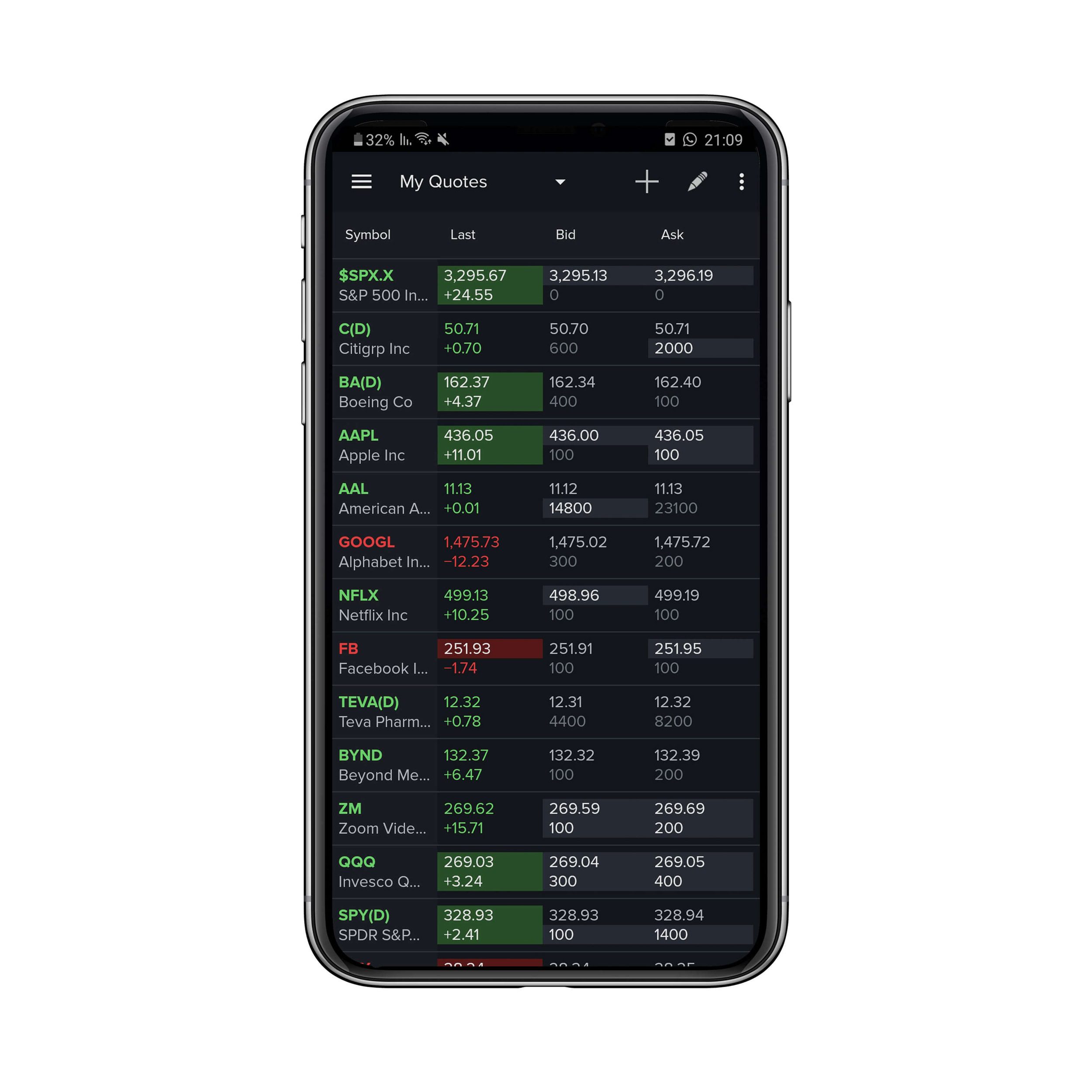

Finance
What Does Capitulation Mean In Stocks
Published: January 18, 2024
Discover the meaning of capitulation in stocks and how it impacts the financial market. Gain insights into the world of finance and its connection to this powerful term.
(Many of the links in this article redirect to a specific reviewed product. Your purchase of these products through affiliate links helps to generate commission for LiveWell, at no extra cost. Learn more)
Table of Contents
Introduction
In the world of finance and investing, understanding the various market dynamics is crucial for success. One such phenomenon that often stirs up a mix of fear and opportunity is capitulation. Capitulation, in the context of stocks, refers to a moment when investors give in to overwhelming selling pressure, causing a rapid and significant decline in stock prices.
Capitulation is a fascinating aspect of the stock market, as it reflects the emotional behavior of market participants in times of extreme stress and uncertainty. It is often characterized by panic selling, where investors are driven by fear and rush to offload their holdings.
While capitulation may seem like a negative event, it can also present opportunities for astute investors. Understanding the signs and implications of capitulation can help investors make informed decisions and potentially profit from the ensuing market recovery.
In this article, we will delve into the concept of capitulation, explore the signs that indicate its occurrence, understand the reasons behind it, and discuss its effects on the stock market. Additionally, we will outline strategies that investors can employ to navigate through capitulation and provide real-life examples to illustrate its significance in the financial world.
Definition of Capitulation
Capitulation, in the context of stocks, refers to a state of extreme fear and panic among market participants that leads to a rapid and significant sell-off in stock prices. It is a moment when investors, overwhelmed by negative market sentiment and uncertainty, surrender their holdings and rush to exit their positions.
Capitulation is often marked by a sharp and prolonged decline in stock prices, accompanied by high trading volumes. It is fueled by intense emotions, such as fear, panic, and desperation, as investors rush to limit their potential losses.
During capitulation, investors often ignore fundamental analysis or rational decision-making processes. Instead, their actions are driven by the herd mentality, as they fear being left behind or suffer further losses if they do not sell their stocks.
Capitulation can occur in both individual stocks and broader market indices. It is usually triggered by various external factors, such as economic downturns, geopolitical instability, unexpected events, or market corrections. The speed and severity of the capitulation can vary, ranging from a swift and violent crash to a more gradual decline over an extended period.
It is important to note that capitulation is a temporary event within the stock market cycle. Following capitulation, a period of stabilization and potential recovery may ensue as stocks become oversold and present attractive buying opportunities for savvy investors.
Overall, understanding the definition and characteristics of capitulation is crucial for investors to navigate the volatile stock market. Recognizing the signs of capitulation, analyzing its underlying causes, and interpreting its implications can assist investors in making informed decisions and potentially seizing profitable opportunities.
Signs of Capitulation in Stocks
Identifying the signs of capitulation in stocks is vital for investors looking to take advantage of potential market opportunities. While every market situation is unique, there are several common indicators that can help recognize when capitulation might be occurring:
- High Trading Volume: During a period of capitulation, there is often an influx of trading activity as investors rush to sell their holdings. This results in unusually high trading volumes, indicating a heightened level of market activity.
- Rapid Decline in Stock Prices: Capitulation is characterized by a significant and rapid decline in stock prices. Investors’ fear and selling pressure can cause a sharp drop in stock values, leading to panic among market participants.
- Extreme Market Volatility: Capitulation is often accompanied by increased market volatility, with wild price swings in short periods. This volatility reflects the intense emotional behavior of investors and the decision-making based on fear rather than rational analysis.
- Overwhelming Negative Sentiment: During capitulation, pessimism and fear dominate market sentiment. News headlines, market commentary, and social media platforms may be flooded with negativity, further fueling the panic and selling pressure.
- Breakdown of Technical Levels: Capitulation can lead to the breakdown of key technical levels, such as support levels or moving averages. These levels are significant as they indicate levels of buying or selling interest, and a breach of these levels suggests a shift in the market dynamics.
- Increased Short Selling: Capitulation often sparks an increase in short selling. Short sellers take advantage of declining stock prices by borrowing shares and selling them, with the expectation of buying them back at a lower price in the future.
- Widespread Panic Selling: The hallmark of capitulation is widespread panic selling. Investors, driven by fear and a sense of urgency, rush to offload their holdings, adding to the selling pressure in the market.
- Market Breadth Deterioration: Capitulation can be accompanied by a deterioration in market breadth, where the number of stocks declining outweighs the number of stocks advancing. This indicates a broad-based sell-off and reflects the widespread nature of the panic.
While it is important to consider these signs of capitulation, it is equally crucial to exercise caution and conduct thorough analysis before making investment decisions. Capitulation can be unpredictable, and false signals may occasionally arise. Therefore, combining technical and fundamental analysis with an understanding of market dynamics can help investors make informed choices during times of market distress.
Reasons Behind Capitulation
Capitulation in the stock market is often triggered by a combination of external factors and human emotions. Understanding the underlying reasons behind capitulation can provide valuable insights into the dynamics of market behavior. Here are some common factors that contribute to capitulation:
- Economic Downturn: Economic recessions or downturns can instill fear and uncertainty among investors. Weak economic indicators, such as slowing growth, rising unemployment, or contracting manufacturing sectors, can shake investor confidence and trigger a sell-off.
- Geopolitical Instability: Political tensions, conflicts, or uncertainties on a global scale can exert significant pressure on the stock market. Geopolitical events, such as trade wars, political upheavals, or terrorist attacks, generate fear and panic, pushing investors to sell their holdings.
- Financial Crises: Financial crises, like the 2008 global financial crisis, can lead to widespread capitulation. The collapse of financial institutions, credit crunches, and systemic failures can erode investor confidence and trigger a sharp decline in stock prices.
- Market Corrections: After prolonged periods of bullish market activity, a market correction can trigger capitulation. Sudden shifts in investor sentiment, concerns about inflated valuations, or overbought conditions can cause a wave of selling as investors rush to lock in profits and avoid potential losses.
- Unexpected Events: Unexpected events, such as natural disasters, terrorist attacks, or pandemics, can create panic and uncertainty in the market. These events disrupt economic activity and investor confidence, leading to a rush to sell stocks and minimize exposure to potential risks.
- Herd Mentality: The herd mentality, a psychological bias where individuals follow the actions of the majority, plays a significant role in capitulation. As fear and panic spread, investors tend to imitate the behavior of others, leading to a cascade of selling and exacerbating the market decline.
- Leverage and Margin Calls: Excessive use of leverage, such as margin trading, can amplify the impact of capitulation. When stock prices decline, investors who have borrowed money to invest may face margin calls, requiring them to sell their stocks to cover their debt, further contributing to the downward spiral.
- Lack of Information or Uncertainty: A lack of reliable information or uncertainty about future prospects can fuel capitulation. When investors are unable to accurately assess the fundamentals or anticipate market movements, they may respond with fear and sell their holdings.
It is important to note that each instance of capitulation may have unique factors contributing to the sell-off. It is crucial for investors to stay informed about market developments, conduct thorough research, and maintain a disciplined investment approach to navigate through periods of capitulation.
Effects of Capitulation on the Stock Market
Capitulation can have profound effects on the stock market, influencing various aspects of market dynamics. Understanding the effects of capitulation is crucial for investors in order to make informed decisions. Here are some key effects of capitulation:
- Sharp Price Declines: Capitulation often leads to significant declines in stock prices. The selling pressure and panic among investors can cause swift and substantial drops in stock values, eroding investor portfolios and creating attractive buying opportunities for those seeking to enter the market.
- Oversold Conditions: Capitulation can drive stocks to become oversold, meaning that prices have declined to a point where they may be undervalued. Oversold conditions can indicate potential buying opportunities for investors as market participants scramble to sell, potentially creating an imbalance between supply and demand.
- Increase in Volatility: During periods of capitulation, market volatility tends to spike. Volatility is a measure of the degree of price fluctuations, and heightened volatility can create trading opportunities for those who can navigate the market swings effectively.
- Sentiment Shift: Capitulation can cause a significant shift in market sentiment. Prolonged negative sentiment can erode investor confidence and prolong the downward trend, while a change in sentiment towards optimism can signal the potential for a market rebound.
- Opportunity for Bargain Hunting: For value investors, capitulation can present opportunities to purchase stocks at discounted prices. Stocks that have experienced significant declines may represent attractive long-term investment prospects for those willing to withstand short-term volatility.
- Increased Trading Volume: Capitulation typically results in a surge in trading volume as investors rush to sell their holdings. The high trading activity can lead to increased liquidity in the market and potentially provide opportunities for short-term traders to capitalize on the increased activity.
- Market Reversal: Following capitulation, there is a possibility of a market reversal. As sellers exhaust their positions, and buying interest reemerges, a period of stability or even a rebound in stock prices can occur. This can lead to a recovery phase where the market begins to regain lost ground.
- Investor Psychology: Capitulation has a profound impact on investor psychology. It tests the resolve and emotional fortitude of investors, challenging their ability to stay calm and make rational investment decisions. Understanding and managing emotions during periods of capitulation is crucial for long-term success in the stock market.
It is important to note that capitulation does not guarantee an immediate rebound in stock prices, and the market may continue to experience volatility for some time. Therefore, it is crucial for investors to exercise caution, conduct thorough analysis, and maintain a long-term perspective when navigating through periods of capitulation.
Strategies for Dealing with Capitulation
Dealing with capitulation in the stock market can be challenging, but implementing the right strategies can help investors navigate through these turbulent times. Here are several strategies to consider:
- Stay Calm and Avoid Emotional Decisions: Emotions often run high during capitulation, leading to impulsive decision-making. It’s crucial to remain calm and avoid making hasty investment choices based on fear or panic. Stick to your investment plan and focus on long-term goals.
- Assess Your Portfolio: Take a close look at your portfolio holdings and reassess your investment thesis. Determine whether any fundamental changes have occurred or if the sell-off is primarily driven by market sentiment. Consider adjusting your portfolio allocations if necessary.
- Identify Bargain Opportunities: Capitulation can create attractive buying opportunities. Conduct thorough research and identify undervalued stocks that align with your investment strategy. Look for companies with solid fundamentals and strong long-term prospects.
- Diversify Your Portfolio: Diversification is key during periods of capitulation. Spread your investments across different sectors, asset classes, and geographic regions. This helps mitigate risk and reduces the impact of a single stock or sector experiencing significant declines.
- Consider Dollar-Cost Averaging: Dollar-cost averaging involves investing a fixed amount of money at regular intervals, regardless of market conditions. This strategy helps to smooth out the impact of short-term market fluctuations and allows you to accumulate more shares when prices are low.
- Review Risk Management Strategies: Revisit your risk management strategies and ensure that you have appropriate stop-loss orders in place to protect against further downside risk. Set realistic targets for your investments, both on the upside and downside, to help manage your expectations.
- Stay Informed and Seek Expert Advice: Stay updated with market news, economic indicators, and company-specific developments. Seeking advice from financial professionals or consulting with experienced investors can provide additional insights and help you make better-informed decisions.
- Prepare for Volatility: Capitulation can lead to increased market volatility. Be mentally prepared for sharp price swings and recognize that volatility is a normal part of investing. Avoid overreacting to short-term fluctuations and focus on the long-term prospects of your investments.
- Be Patient and Maintain a Long-Term Perspective: Capitulation is often a temporary phenomenon within the stock market cycle. Remember that markets have historically recovered from downturns. Stay patient, maintain a long-term perspective, and avoid making rash decisions based on short-term market movements.
Remember, no strategy can guarantee profits during capitulation, as market behavior is unpredictable. However, by employing these strategies and maintaining a disciplined and rational approach, investors can potentially navigate through capitulation and position themselves for long-term success in the stock market.
Real-Life Examples of Capitulation in Stocks
Capitulation is a phenomenon that has occurred throughout the history of the stock market. Several notable real-life examples serve as reminders of the impact and significance of capitulation. Here are a few examples:
- Dotcom Bubble Burst (2000): During the late 1990s, the Dotcom bubble saw a surge in technology stocks, driven by speculation and investor euphoria. However, in 2000, the bubble burst, leading to widespread capitulation. Many internet companies with skyrocketing valuations faced sharp declines as investors rushed to sell. Companies like Pets.com, Webvan, and even tech giants like Cisco Systems saw their stock prices plummet.
- Global Financial Crisis (2008-2009): The subprime mortgage crisis triggered a global financial crisis that resulted in widespread capitulation. Major financial institutions faced severe losses, and stock markets experienced a significant decline. Notable examples include the collapse of Lehman Brothers and the U.S. housing market crash, which led to panic selling and a prolonged period of capitulation.
- COVID-19 Pandemic (2020): The outbreak of the COVID-19 pandemic in early 2020 caused a rapid and severe capitulation in global stock markets. Investors feared the economic consequences of widespread lockdown measures and uncertainties surrounding the virus. Stock indices around the world, such as the S&P 500 and the FTSE 100, experienced steep declines, with many individual stocks and sectors also facing capitulation.
- Black Monday (1987): On October 19, 1987, stock markets around the world experienced a significant crash, known as “Black Monday.” The Dow Jones Industrial Average plummeted by over 22%, and global markets witnessed panic-selling and capitulation. The crash was attributed to a combination of factors, including valuation concerns, program trading, and international tensions.
- Great Depression (1929-1933): The Great Depression was a period of severe economic downturn and widespread capitulation. Following the stock market crash of 1929, stock prices plummeted, and investors rushed to sell their holdings. The Dow Jones Industrial Average lost almost 90% of its value, leading to a prolonged period of economic hardship and financial distress.
These real-life examples highlight the impact of capitulation on stock markets throughout history. They serve as reminders that market downturns are a normal part of investing, and opportunities can arise from periods of extreme fear and selling pressure.
Conclusion
Capitulation, characterized by extreme fear and panic selling, is a phenomenon that often shakes the stock market. It reflects the emotional behavior of investors during periods of stress and uncertainty. While capitulation can lead to significant declines in stock prices, it also presents opportunities for astute investors who can recognize the signs and implications.
Throughout history, we have seen various examples of capitulation, such as the Dotcom Bubble Burst, the Global Financial Crisis, and the recent COVID-19 pandemic. These events serve as reminders of the volatile nature of the stock market and the potential impact of investor sentiment on stock prices.
Understanding capitulation and its effects on the stock market is crucial for investors. By staying calm, assessing portfolios, and identifying bargain opportunities, investors can potentially take advantage of market downturns. Implementing strategies such as diversification, dollar-cost averaging, and maintaining a long-term perspective can help navigate through periods of capitulation.
It is important to remember that each instance of capitulation is unique, and there are no guaranteed outcomes. Emotional decision-making should be avoided, and thorough research should be conducted before making investment decisions. Consulting with financial professionals and staying informed can provide additional insights and help investors make more informed choices.
In conclusion, capitulation is an inherent part of the stock market cycle. By understanding its definition, recognizing the signs, and implementing effective strategies, investors can better navigate through periods of capitulation and position themselves for long-term success in the ever-changing world of finance.














